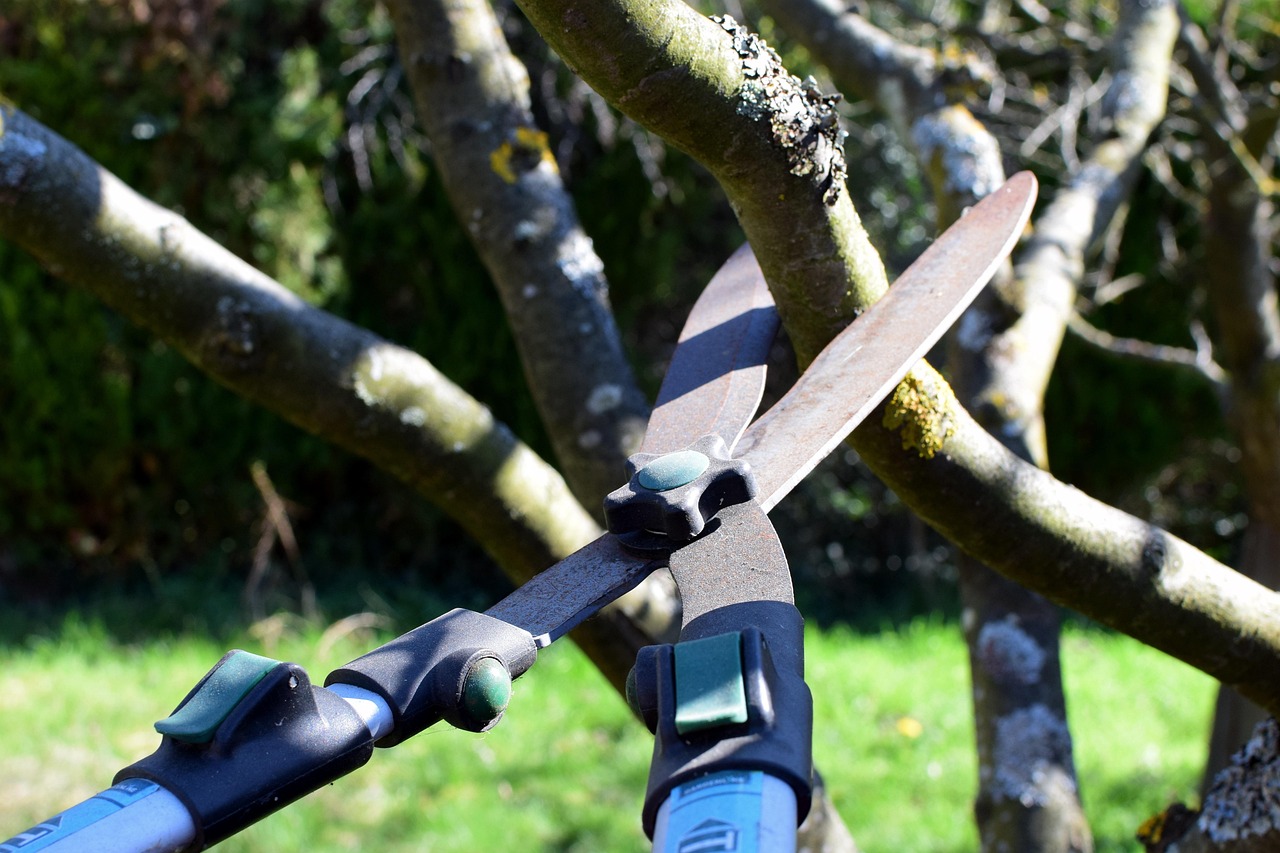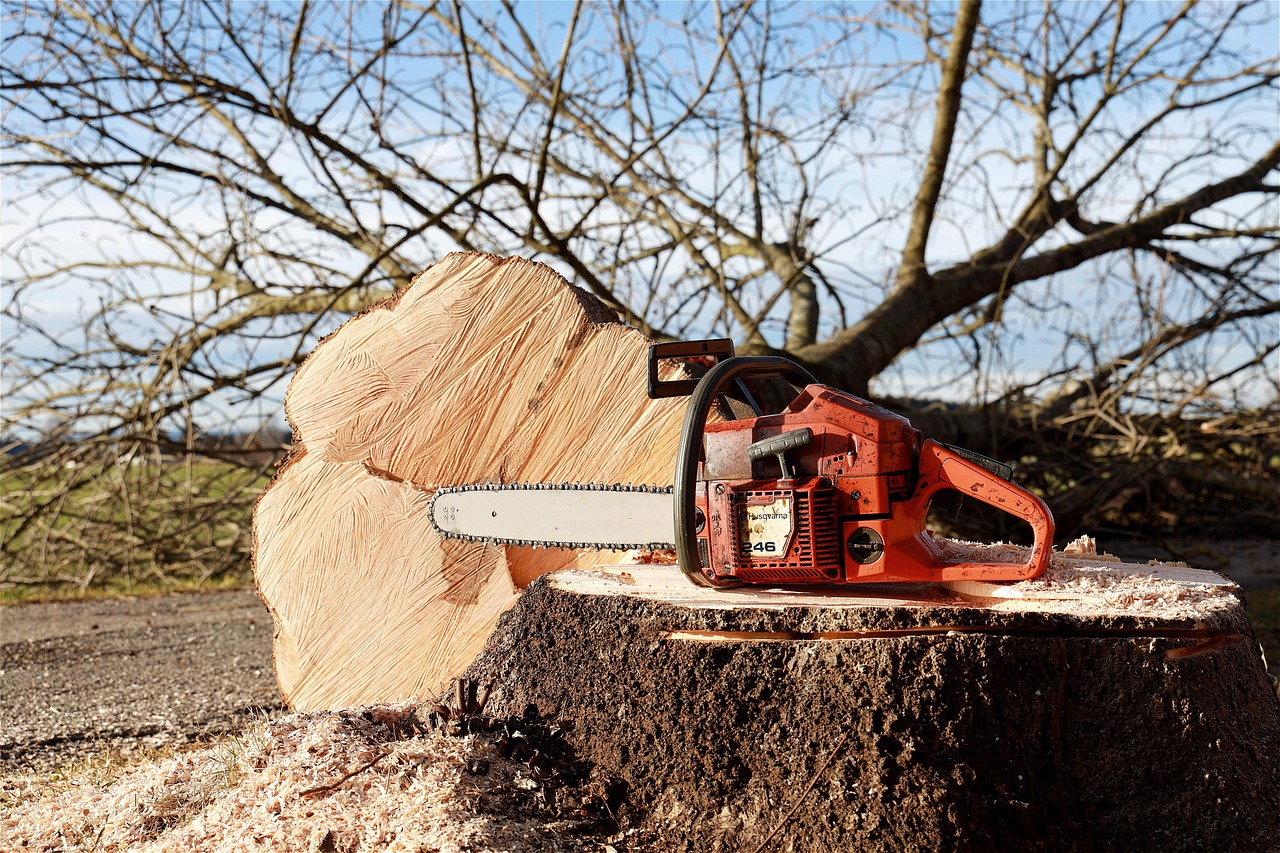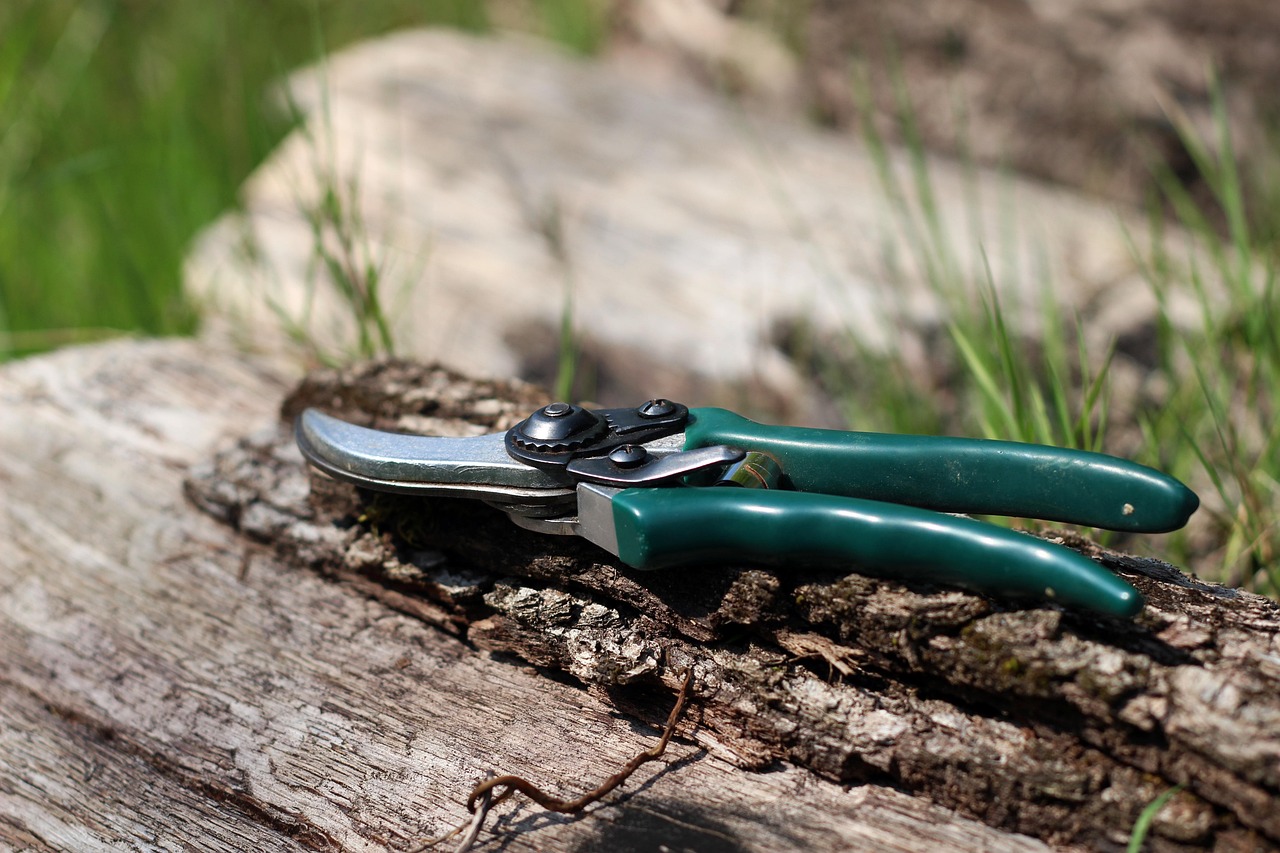Tree pruning around pools and recreational areas is essential for safety, aesthetics, and health. Regular pruning helps prevent accidents, reduces debris, and promotes healthy growth. It also enhances the overall appearance of the landscape, making these spaces more enjoyable.
Maintaining trees near pools and recreational areas requires careful consideration. Overgrown branches can pose safety hazards, such as falling into the pool or obstructing views. Additionally, trees can drop leaves, flowers, and fruits into the pool, creating maintenance challenges. Proper tree care not only ensures a safe environment but also enhances the beauty of these spaces.

Understanding the types of trees commonly found near pools and recreational areas can help in planning effective pruning strategies. Deciduous trees, evergreens, and ornamental trees each require different approaches to pruning. Knowing the specific needs of these trees will assist in promoting healthy growth and minimizing potential risks.
Benefits of Tree Pruning
Tree pruning offers numerous benefits that directly impact the safety and aesthetics of pools and recreational areas. Some of the key advantages include:
- Safety: Regular pruning reduces the risk of falling branches that could injure swimmers or damage property.
- Reduced Debris: Pruned trees contribute less organic material to pools, making maintenance easier.
- Improved Airflow: Thinning out dense foliage allows better air circulation, reducing humidity around pools and preventing mold growth.
- Aesthetic Appeal: Well-maintained trees enhance the visual appeal of outdoor spaces, creating a more inviting atmosphere.
- Healthier Trees: Pruning promotes healthy growth by removing dead or diseased branches, allowing more sunlight to reach the remaining foliage.
In addition to these benefits, it is essential to consider the timing and technique of tree pruning. The right approach can make a significant difference in how effectively trees thrive in their environment.

When to Prune Trees
The timing of tree pruning is crucial for promoting healthy growth. Generally, late winter or early spring is the best time to prune most tree species. During this time, trees are still dormant, which minimizes stress on the plants. However, certain species may require different timing:
| Tree Type | Best Pruning Time | Notes |
|---|---|---|
| Deciduous Trees | Late winter to early spring | Before new growth begins |
| Evergreens | Late spring or early summer | Avoid heavy pruning in fall |
| Flowering Trees | After flowering | Prune immediately after blooms fade |
| Fruit Trees | Late winter to early spring | Focus on shaping and removing dead wood |
The table above highlights some common tree types and their ideal pruning times. Being aware of these specifics can help ensure healthier trees around your recreational areas.
Pruning Techniques
Effective pruning involves various techniques that can enhance tree health while ensuring safety in recreational spaces. Here are some important practices to consider:

- Thinning: Removing select branches to improve light penetration and air circulation.
- Heading: Cutting back branches to a bud or lateral branch to encourage new growth.
- Reduction: Shortening branches to reduce size while maintaining the tree’s natural shape.
- Crown Cleaning: Removing dead or diseased branches from the tree’s canopy.
Each technique serves a specific purpose and can be used individually or in combination to achieve desired results. Understanding how and when to apply these techniques will lead to healthier trees that complement the recreational area.
In addition to proper techniques, having the right tools is essential for successful pruning. Quality tools not only make the job easier but also ensure clean cuts that promote healing in trees.
Essential Pruning Tools
The following tools are commonly used for tree pruning and can help achieve optimal results:

- Hand Pruners: Ideal for small branches and precise cuts.
- Loppers: Useful for cutting thicker branches that are difficult to reach.
- Saws: Necessary for larger limbs, ensuring a clean cut without damaging the tree.
- Safety Gear: Always wear gloves and goggles to protect yourself during pruning tasks.
Selecting the right tools ensures efficiency and safety during the pruning process. Proper maintenance of these tools is also crucial for their longevity and effectiveness.
This section has outlined critical considerations for tree pruning around pools and recreational areas. Understanding the benefits, timing, techniques, and necessary tools will lay a strong foundation for maintaining a safe and enjoyable outdoor space.
Common Tree Species Around Pools
When planning tree pruning around pools and recreational areas, it is essential to understand the types of trees commonly found in these settings. Different species have unique growth patterns and pruning requirements. Knowing these characteristics can help in effectively managing their care.
Deciduous Trees
Deciduous trees are characterized by their seasonal leaf shedding. They provide shade during the summer, making them popular near pools. However, their falling leaves can create maintenance challenges. Common examples include:
- Maple: Known for its vibrant fall colors but requires regular pruning to maintain shape.
- Oak: A sturdy choice, but its large branches need careful management to prevent safety hazards.
- Birch: These trees have a beautiful appearance but can drop branches if not pruned regularly.
Evergreen Trees
Evergreens retain their foliage year-round and provide consistent privacy and windbreaks. They can also help reduce debris in pools. Popular varieties include:
- Pine: Fast-growing and resilient but may require occasional thinning to avoid overcrowding.
- Spruce: This tree offers excellent coverage and requires less frequent pruning.
- Cypress: Ideal for wet areas, these trees need careful shaping to maintain their form.
Ornamental Trees
Ornamental trees add beauty and charm to recreational areas. They often require specific pruning techniques to maintain their aesthetics. Some notable ornamental trees are:
- Cherry Blossom: Prune just after flowering to maintain shape without sacrificing blooms.
- Dogwood: Requires minimal pruning but benefits from removing dead or crossing branches.
- Magnolia: Needs careful attention to maintain its stunning flowers and overall structure.
Potential Hazards of Overgrown Trees
While trees provide numerous benefits, overgrown branches can create several hazards in and around pools. It is crucial to recognize and address these risks promptly.
Safety Hazards
Overgrown trees can pose significant safety risks, including:
- Falling Branches: Heavy branches may break off during storms or high winds, potentially injuring swimmers or guests.
- Obstructed Views: Dense foliage can block visibility, making it difficult to supervise children or pets near the pool.
- Slipping Hazards: Leaves and debris from trees can create slippery surfaces around the pool area.
Pest Infestations
Overgrown trees can also attract pests that may harm both the trees and the surrounding environment. Some common issues include:
- Insects: Pests such as aphids or beetles can thrive in dense foliage, affecting tree health.
- Mold and Fungi: Excess moisture trapped in thick branches can promote mold growth, posing health risks.
Pruning Techniques for Different Tree Types
The approach to pruning varies based on tree species and their specific needs. Understanding how to tailor pruning techniques will maximize the health of the trees while ensuring safety around pools.
Crown Thinning
This technique involves selectively removing branches within the canopy. It improves light penetration and air circulation, which is especially beneficial for:
- Deciduous Trees: Enhances seasonal color and reduces leaf drop into pools.
- Ornamental Trees: Maintains their natural shape and encourages healthy growth.
Crown Raising
Crown raising increases the clearance between the ground and the lower branches. This technique is important for:
- Safety: Ensures swimmers have unobstructed access to the pool area.
- Aesthetics: Provides a more open look, improving the overall landscape design.
Crown Reduction
This technique reduces the height or spread of a tree’s canopy. It is particularly useful for:
- Tall Trees: Prevents branches from overhanging pools.
- Maintaining Shape: Keeps ornamental trees looking neat without sacrificing health.
The Role of Professional Arborists
While homeowners can manage basic pruning tasks, hiring a professional arborist can be beneficial for more extensive work. Arborists possess specialized knowledge and skills that ensure proper care. Here are some advantages of hiring a professional:
- Expertise: Arborists understand tree biology and can identify issues that may not be visible to the untrained eye.
- Safety Protocols: Professionals are trained in safety measures, minimizing risks associated with pruning large trees.
- Proper Equipment: Arborists have access to advanced tools that can make the job more efficient and effective.
Involving professionals for significant pruning tasks allows homeowners to focus on enjoying their outdoor spaces while ensuring that tree maintenance is handled correctly.
This section has elaborated on various aspects of tree species, potential hazards of overgrown trees, effective pruning techniques, and the benefits of hiring professionals. Understanding these factors will support better management of trees around pools and recreational areas, contributing to a safer and more enjoyable environment.
Seasonal Considerations for Tree Pruning
Understanding the seasons is vital when planning tree pruning around pools and recreational areas. Each season brings unique challenges and opportunities for tree care. Knowing how to approach pruning at different times of the year can significantly impact tree health and safety.
Spring Pruning
Spring is often considered one of the best times for pruning many tree species. As trees begin to show signs of new growth, pruning can stimulate healthy development. Key points to consider include:
- Timing: Prune before new growth begins to avoid stressing the trees.
- Focus: Concentrate on removing dead or diseased branches to allow for better air circulation.
- Flowering Trees: For those that bloom in spring, wait until after flowering to prune.
Summer Pruning
Summer pruning can be beneficial for shaping trees and controlling their size. However, it should be approached with caution. Important considerations include:
- Light Pruning: Focus on minor adjustments to avoid stressing the tree during its active growing season.
- Removing Suckers: Eliminate unwanted shoots from the base of trees to promote healthier growth.
- Pest Management: Summer is an excellent time to inspect trees for pests or diseases that may thrive in warmer weather.
Fall Pruning
Fall is generally not recommended for most pruning tasks. However, there are some exceptions. Considerations include:
- Timing: If necessary, prune early in the fall before the onset of cold weather.
- Avoid Stress: Pruning too late can expose trees to stress before winter dormancy.
- Focus on Safety: Remove any hazardous branches that could pose risks during winter storms.
Winter Pruning
Winter is often regarded as an ideal time for pruning many trees. The dormant season allows for easier visibility of the tree’s structure and any problematic branches. Essential points to note include:
- Visibility: Without leaves, it is easier to assess the tree’s shape and remove unwanted branches.
- Health Benefits: Pruning during dormancy can enhance spring growth and flowering.
- Cold Weather Precautions: Use proper tools and techniques to prevent damage to the tree from cold temperatures.
Pest and Disease Management in Tree Care
Pests and diseases can severely impact the health of trees around pools and recreational areas. Recognizing early signs of trouble can prevent larger issues down the line.
Common Pests
A variety of pests can affect trees, particularly in warm climates. Some common pests include:
- Aphids: Small insects that feed on plant sap, causing leaves to curl and yellow.
- Spider Mites: Tiny pests that thrive in dry conditions, leaving webbing on branches and leaves.
- Caterpillars: Larvae that can defoliate trees quickly if not managed properly.
Disease Symptoms
Diseases can manifest in various ways, often making early detection critical. Symptoms may include:
- Leaf Spots: Brown or black spots on leaves may indicate fungal infections.
- Bark Damage: Cracked or peeling bark could suggest pest infestations or disease.
- Wilting: Trees that are wilting may be suffering from root rot or other issues.
Best Practices for Tree Pruning Near Water Features
Pruning near pools and water features requires special attention to ensure safety and cleanliness. Implementing best practices can help maintain a healthy environment around these areas.
Avoiding Chemical Treatments
Chemicals used for pest control or fertilization can contaminate pool water. It is essential to avoid using these products near water features. Consider these alternatives:
- Organic Solutions: Use natural methods for pest control, such as introducing beneficial insects.
- Mulching: Organic mulches can improve soil health without chemical applications.
Maintaining Cleanliness
Keeping the area around pools tidy is crucial for safety and aesthetics. Here are a few tips:
- Regular Cleanup: Routinely remove fallen leaves and branches to prevent slips and clogs in pool filters.
- Sweeping Paths: Keep walkways and areas around pools clean of debris to enhance safety.
Tree Placement Considerations
The placement of trees around pools significantly affects maintenance and safety. When planting new trees or evaluating existing ones, consider the following:
- Distant Planting: Avoid planting large trees too close to pools to reduce debris and risk of falling branches.
- Selecting Suitable Species: Choose tree varieties that have less invasive root systems and minimal debris production.
This section has explored seasonal considerations for tree pruning, management of pests and diseases, and best practices for maintaining trees near water features. Addressing these factors will contribute to a healthier landscape around pools and recreational areas, ensuring both beauty and safety in outdoor spaces.
Additional Considerations for Tree Pruning
In addition to the previously discussed factors, there are several other considerations that can enhance the effectiveness of tree pruning around pools and recreational areas. These aspects focus on long-term tree health, environmental impact, and community engagement.
Environmental Impact
Tree pruning should always take into account the environmental effects, especially in areas close to water. Here are some points to consider:
- Preserving Wildlife: Trees provide habitats for birds and other wildlife. When pruning, consider the nesting seasons of local species to avoid disrupting their habitats.
- Encouraging Biodiversity: Maintaining a variety of tree species can support a healthy ecosystem, which can be beneficial for pest control and pollination.
- Sustainable Practices: Employ eco-friendly practices such as composting tree clippings and using organic mulch to enrich soil without chemicals.
Community Involvement
Engaging the community in tree care can foster a sense of stewardship and responsibility toward local landscapes. Some ways to promote involvement include:
- Workshops: Organize educational workshops on tree pruning techniques and maintenance for community members.
- Volunteer Days: Schedule community events to assist with tree care, providing hands-on experience while enhancing local green spaces.
- Awareness Campaigns: Promote the importance of trees in recreational areas through social media and local events, encouraging residents to participate in tree care initiatives.
Monitoring Tree Health
Regular monitoring of tree health is critical in maintaining safety and aesthetics around pools. Implementing a systematic approach will help in early detection of issues. Steps include:
- Routine Inspections: Conduct periodic checks for signs of disease, pests, or structural weakness in trees.
- Documentation: Keep records of pruning activities, observations, and any changes in tree health to track patterns over time.
- Consultation with Experts: Engage arborists for assessments when issues are suspected to ensure prompt action is taken.
Final Thoughts
Tree pruning around pools and recreational areas is a vital aspect of landscape management that enhances both safety and beauty. By understanding the specific needs of various tree species, recognizing seasonal considerations, and employing effective pruning techniques, homeowners can create inviting outdoor spaces that are safe for families and guests.
Additionally, maintaining awareness of environmental impacts and involving the community can lead to healthier trees and more vibrant recreational areas. Regular monitoring of tree health and proactive maintenance will ensure that trees continue to thrive while contributing positively to the landscape.
In conclusion, effective tree pruning is not just about aesthetics; it is about creating safe, enjoyable environments where families can gather and enjoy nature. With proper care and attention, trees can enhance the beauty of pools and recreational areas for many years to come.
